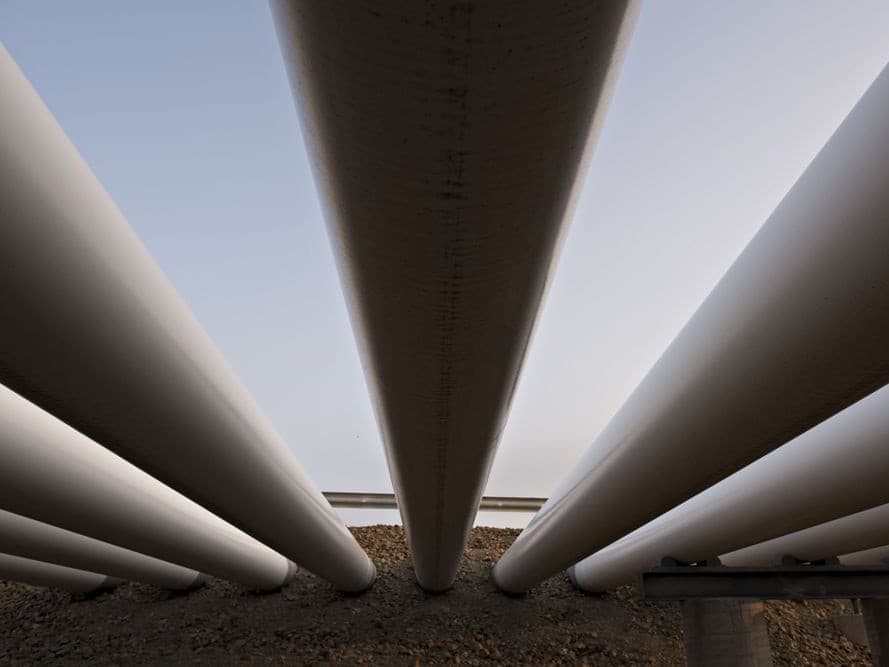Efforts by the U.S. to continue growing its natural gas sector are in jeopardy due to takeaway constraints.
East Daley Capital Inc.: U.S. LNG exports will grow to 26.3 Bcf/d by 2030.
A few midstream companies are well-positioned to benefit from the projected increase in LNG exports
Join Our Community
Last year, the United States became the world’s biggest exporter of liquefied natural gas (LNG) thanks to a massive surge in deliveries to energy-starved buyers in Europe and Asia amid Russia’s invasion of Ukraine and a global energy crisis. Indeed, the U.S. and North America accounted for the lion’s share of long-term LNG contracts signed in 2022 for the export market with no less than 20 deals inked. The biggest contract on record was signed between Energy Transfer Partners and Shell Plc. (NYSE: SHEL) for the supply of 2.1mtpa of LNG from 2026 to 2046.
Unfortunately, efforts by the U.S. to continue growing its natural gas sector are in jeopardy due to takeaway constraints including limited pipeline capacity. For instance, in the Appalachian Basin, the country’s largest gas-producing region churning out more than 35 Bcf/d, environmental groups have repeatedly stopped or slowed down pipeline projects and limited further growth in the Northeast. This leaves the Permian Basin and Haynesville Shale to shoulder much of the growth forecast for LNG exports. Indeed, EQT Corp.(NYSE: EQT) CEO Toby Rice recently acknowledged that Appalachian pipeline capacity has “hit a wall.”
It’s the reason why all eyes have turned to pipeline companies as they try to save the day.
Analysts at East Daley Capital Inc. have projected that U.S. LNG exports will grow to 26.3 Bcf/d by 2030 from their current level of nearly 13 Bcf/d. For this to happen, the analysts say another 2-4 Bcf/d of takeaway capacity would need to come online between 2026 and 2030 in the Haynesville.
Given this backdrop, here are three pipeline companies that look like good buys right now.
Hess Midstream LP (NYSE: HESM) is a fee-based traditional master limited partnership (MLP) originally carved out of New York-based integrated oil giant Hess Corp. (NYSE: HES) in 2014 to own, operate, develop and acquire a diverse set of midstream assets to provide services to its parent company as well as third-party customers.
Now some investors want nothing to do with MLPs–and for good reason. Prior to the oil price crash of 2014, MLPs were popular with income investors due to their slow but steady and almost guaranteed returns. Indeed, in past business cycles, MLPs frequently outperformed oil and gas stocks thanks to their considerably higher yields, favorable taxation and less exposure to commodity prices. Unfortunately, the Big Shift away from the MLP structure began in earnest in 2018 after the Federal Energy Regulatory Commission (FERC) reversed a key policy in MLP tax costs for interstate pipelines that led to increased cost of business for many companies in the space. To add insult to injury, Trump’s tax bonanza that saw corporate tax rate lowered from 35% to 21% seriously lowered the tax advantage MLPs held over traditional oil and gas companies.
Related: Russian Lukoil To Sell Strategic Italian Refinery To Trafigura-Backed Company
But HESM has continued to defy the odds and thrive in the midst of that storm. First off, this little-known MLP has grown its distribution by more than 140% over the past 5 years and currently yields a very decent 7.22%. HESM share price has even advanced by 50% over the stretch compared to just 20% by your average large-and mid-cap energy company. On the revenue front, Hess Midstream has continued to impress after reporting Q3 2022 revenue of $334.8M (+10.2% Y/Y), beating the Wall Street consensus by $17.77M while Q3 GAAP EPS of $0.53 beat by $0.01. Meanwhile, adjusted EBITDA clocked in at $253.6 million; Distributable Cash Flow was $214.8 million and Adjusted Free Cash Flow was $155.6 million.
Hess Midstream announced a 5% payout hike for 2022, and intends to maintain that growth rate over the next two years which could see the company’s yield exceed 8%. Other high-yield MLPs are Holly Energy Partners LP (NYSE: HEP)+7.4%, Enterprise Product Partners LP (NYSE: EPD)+7.7% and Magellan Midstream Partners (NYSE: MMP)+8.1%.
Houston, Texas-based Kinder Morgan Inc. (NYSE: KMI) operates as an energy infrastructure company including natural gas pipelines, products pipelines, terminals, and CO2 in North America.
Ever since the oil price crash of 2014, Kinder Morgan has cut back on spending and instead focused on strengthening its balance sheet. The company also took the radical and unpopular decision of slashing its dividend–which eventually worked as planned. Over the past three years, Kinder Morgan has been able to lower its long-term debt by nearly 30% while capital expenditure is down by 60%. This has left the company with plenty of free cash flow to support its nearly 6% (ttm) dividend.
Another reason to love this company: Kinder Morgan contracts its assets via long-term take-or-pay and fixed-fee contracts which ensures the company enjoys steady cash flows regardless of the market cycle. Indeed, the stock did not suffer like most of its peers during the infamous gas price crash of 2020. On the flip side, KMI shares might not make a lot of gains when gas prices soar like they did till mid-2022. In other words, this is a good stock for investors looking for some measure of downside protection in choppy markets.
The Williams Companies Inc. (NYSE: WMB) operates as an energy infrastructure company primarily dealing with the transportation of natural gas and natural gas liquids.
Lately, WMB has been on an M&A spree as it looks to expand and to enhance its gas pipeline network. In its latest deal, Williams has agreed to acquire MountainWest Pipelines from Southwest Gas (NYSE: SWX) for $1.07 billion in cash and also assume $430 million of Mountain West’s debt. MountainWest’s assets run across Utah, Wyoming, and Colorado, comprising ~2,000-mile interstate natural gas pipeline system with ~8 billion cubic feet per day of transmission capacity as well as 56 billion cubic feet of natural gas storage.
Williams says that its latest acquisition will expand the company’s services in the Rockies region and also boost its cash flows backed by government-regulated rate structures. The company also sees significant synergies as it integrates the incoming system into its existing assets, which it says could allow it to offer additional services to shippers.
The MountainWest deal comes hot on the heels of Williams’’ acquisitions of Trace Midstream’s Haynesville gathering and processing assets as well as NorTex Midstream earlier in the year. The company has been successful in utilizing its improving balance sheet to expand its natural gas infrastructure platform, which should be accretive to earnings, cash flows and, hopefully, future dividends.
Source: Alex Kimani/ Oilprice.com





